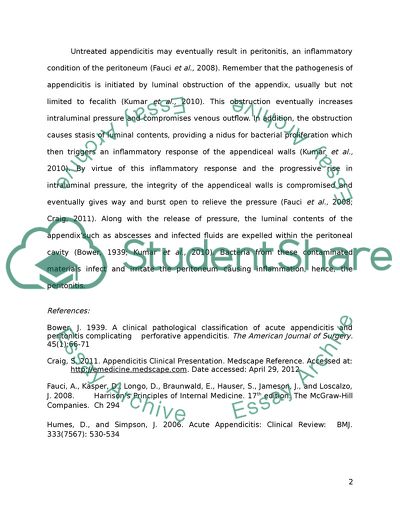Pathophysiology-Appendicitis FlowChart and Discussion Essay. https://studentshare.org/medical-science/1773589-the-dangers-of-untreated-appendicitis
Pathophysiology-Appendicitis FlowChart and Discussion Essay. https://studentshare.org/medical-science/1773589-the-dangers-of-untreated-appendicitis.


